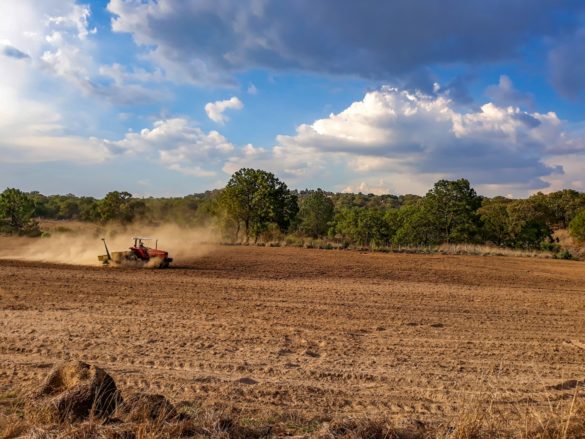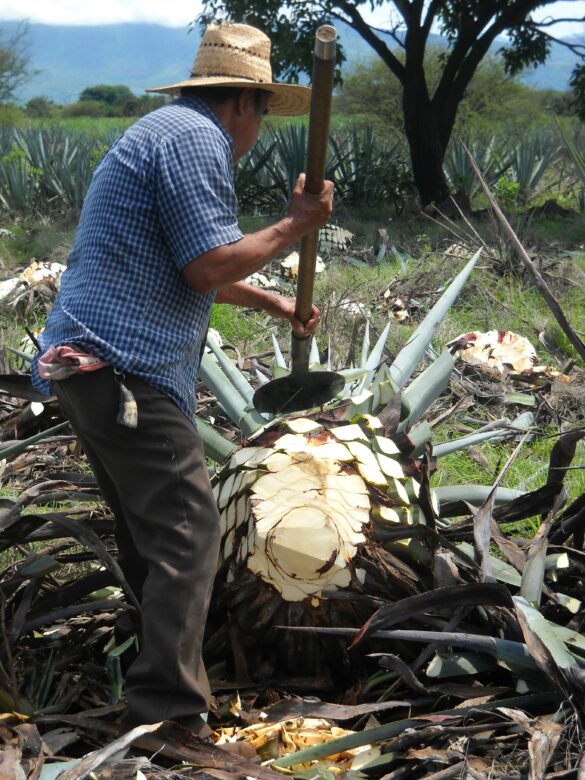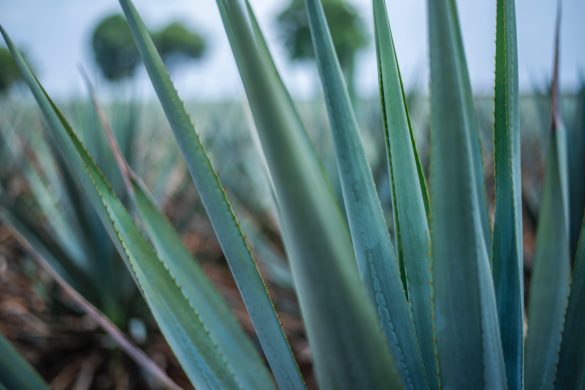A 2030 vision to mainstream biodiversity in Jalisco’s agricultural, fisheries, aquaculture and forestry sectors
Context
- About the region
The territory of the State of Jalisco has a total surface area of 8.02 million hectares and the presence of 11 ecoregions, more than 21% of the 51 described for Mexico. The Sinaloan Tropical Deciduous Forest penetrates the state through the canyons formed by the Grande de Santiago River and its tributaries, which are biologically rich. The Mangroves of the Mesoamerican North Pacific develop over the 351 km of Jalisco’s coastline. In the pine and oak forests of the Sierra Madre Occidental, more than 2,000 species of vascular plants have been identified.
As of January 2020, the wealth of ecosystems and species in Jalisco was represented in 546,283.37 hectares (ha) decreed as federal Natural Protected Areas (NPAs); 94,149.78 ha as state; 19,909. 80 ha as municipal and, according to December 2019 data provided by the National Commission of Natural Protected Areas (CONANP), Areas Voluntarily Destined for Conservation have been certified over 1,328.48 ha due to the interest of the owners of the respective properties in having them recognized as ANP. Of the 142 RAMSAR sites in Mexico, 13 are located in Jalisco and cover an area of 156,157.94 ha.
In the ecoregion called Bosque de Pino y Encino in the Transmexican Volcanic Belt there are 14 Natural Protected Areas. The Lake Zones of Central Mexico are located in Jalisco, all of which provide habitat for many species. In terms of freshwater ecoregions in the state, there are three of the 27 found in Mexico.
Despite the environmental, economic and cultural benefits of the ecosystems of Jalisco, the terrestrial, freshwater, marine and coastal ecoregions present serious problems such as overextraction of water; soil and water contamination by solid waste and agrochemicals; unplanned agricultural and livestock development; deforestation; soil erosion and the consequent silting of water bodies; and the introduction of exotic plants and animals.
- About the background/thematic
The Jalisco State Strategy for Mainstreaming Biodiversity (IBP-Jal) aims to strengthen biodiversity-related activities in the agricultural, fisheries, aquaculture and forestry sectors.
In this strategy, biodiversity is considered an integral part of the functioning of each productive sector in order to create healthy and resilient ecosystems that ensure the supply of goods and services essential for human well-being and long-term economic growth.
This alignment guarantees the development of a robust strategy in accordance with Mexico’s international commitments in terms of food security, sustainable development and biodiversity integration.
- About the specific commitments / Key Targets (SDGs; Climate Change; Biodiversity). Eg. Climate Change – 80% below 1990 levels by 2050
The vision of the Strategy for the year 2030 is that the agricultural, fishing-aquaculture and forestry sectors of the State of Jalisco effectively and increasingly integrate the sustainable use and conservation of biodiversity in their plans, programs and actions, in order to guarantee the contributions of each of these three sectors to the sustainable development, productivity and food security of the State, contributing, in turn, to the wellbeing of society and the conservation of ecosystem services.
Its general objective is to guide the work and decision-making of the Secretariat of Agriculture and Rural Development (SADER) and the Secretariat of Environmental Affairs and Territorial Development (SEMADET), as well as the collaboration among them and with other relevant actors in the State of Jalisco, to achieve the sustainable development of the agricultural, fishing, aquaculture and forestry sectors, together with the conservation of the biodiversity of their ecosystems, through the permanent improvement of the actions promoted by the state government and the articulation of strategies and policy instruments.
- Case/ Project/ Initiative
- WHAT it is; WHEN it was created and HOW; by WHOM; WHY it was created
- What are the GOALS
- What are the investments/ BUDGETs?
- Who is enrolled / beneficiaries and how do you foster their participation? (levels of government, civil society, business, academia, etc.)
- How it works (Priorities/ Steps/ Divisions/ etc.)
The IBP-Jal is the first instrument of its kind in the country, prepared by a sub-national government. It is important to note that the Strategy is a multidisciplinary and multisectoral effort and is aligned with the Jalisco State Biodiversity Strategy (EEB-Jal), as well as with the guidelines derived from the Convention on Biological Diversity (CBD) and the Food and Agriculture Organization of the United Nations (FAO).
The IBP-Jal seeks to maintain or increase production capacity without detriment to biological diversity, in order to simultaneously gain in terms of both conservation and benefits for productive activities.
The mainstreaming of biodiversity into the productive sectors is a dynamic process that must be accompanied by institutional backing, political will and social support.
Intersectoral coordination is essential to promote the implementation of the strategy in an operative and participatory manner.
To achieve the above, the timing of implementation is important. It is essential to implement actions in the short term with more immediate results, such as one-off modifications to a support program and, in other cases, actions that introduce changes in productivity and consumption patterns, for which previous results will be necessary or which are planned for longer periods of time due to feasibility or other reasons. This is why it is important to identify moments for implementation and the establishment of specific goals with measurable results over time.
It is important to highlight that this multisectoral strategy incorporates elements and is aligned with the Biodiversity Strategy, as well as with recommendations or guidelines derived from the CBD and FAO. This alignment guarantees the development of a robust strategy in accordance with Mexico’s international commitments in terms of food security, sustainable development and biodiversity integration.
A fundamental part of implementation consists of generating adjustments to policy and planning instruments, which represents a great opportunity to formalize in sectoral programs, goals and actions to integrate the conservation and sustainable use of biodiversity in Jalisco’s agricultural, fisheries, aquaculture and forestry sectors.
- Outcomes
- Achieved Results (Numbers and indicators) and how this contribute to the global agendas (SDGS, Paris Agreement, post-2020 biodiversity framework)
- Acknowledgements/ Awards
- Main findings/ Lessons Learnt
- Main challenges and how they were overcome, and if not, what are the plans to overcome them.
Among the biggest challenges of the implementation of the Strategy on Mainstreaming Biodiversity is that the drivers of biodiversity loss are directly connected to the biggest economic sectors. One of the main causes of biodiversity loss is land use change; the most frequent example is the conversion of forest soils, flora and fauna, to agricultural use. It is important to mention that many forest plantations have the same effect on biodiversity loss, given that even when native species are incorporated, they are generally of a single species and not in accordance with the diversity of species in a natural ecosystem. Another factor is forest fires; in general terms, it is recognized that the main causes are not natural, but cultural, and the most serious one has to do with agricultural burning, in the preparation of land and for the regrowth of pastures for livestock.
The expansion of commercial agriculture is another factor of environmental deterioration with relevant impacts on deforestation rates through changes in land use, contamination of water bodies and the impact on public health due to the use of pesticides. Among the main crops that, due to their extension, production methods, recent growth or link to industrialization processes, have a greater environmental impact are agave, avocado, sugar cane and berries.
Jalisco is one of the largest consumers of agrochemicals in Mexico, with 84% of farmers using them. The use of nitrogen and phosphate fertilizers causes the death of rivers; the state contributes more than 200,000 tons of nitrogen per year. In addition, crop fertilization and eutrophication of bodies of water stimulate excessive vegetation growth, algaeproliferation and the creation of anoxic zones on the coast. The CBD also considers the use of agrochemicals as one of the five main threats to biodiversity.
Visit the strategy here.




